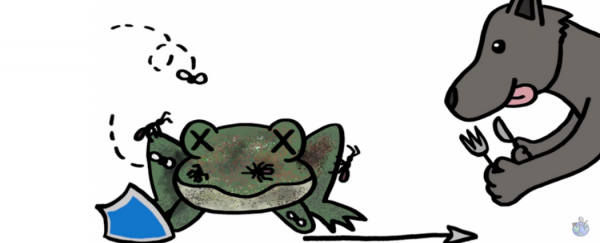When an animal dies, its natural immune defences stop functioning, which finally allows a whole host of microbes to move in and start decomposing the remains. And while these hungry microbes can often take up residence inside a carcass within five minutes of death, they still have to compete with much larger carnivores over a long period of time in order to keep their smorgasbord flowing. How do they do this? By producing an array of toxins such as anthrax and botulinum, tiny doses of which can kill off most of the animal kingdom, says Henry Reich in the latest episode of MinuteEarth.
But what about vultures, foxes, and other types of scavengers that have formed a very successful existence around eating dead meat, and eating it often?
Interestingly, says Reich, scientists are only just beginning to figure out how they do it without getting sick and dying themselves. One possible mechanism could be some sort of internal quality control measure that tells something like a fox not to eat an animal that's died from disease, but to just stick to those that have been cut down in a healthy state by a predator. How can they tell the difference? No one really knows. Hyenas do the same - while they'll eat a carcass that has been left out for days, they're far more comfortable hooking into something that's not yet dead, if given half the chance, likely because they instinctively know that it's less risky.
If all that disease-dodging sounds a little stressful, consider the vulture, because this guy has got eating rotting flesh down to an art. According to MinuteEarth, vultures will happily chow down on toxin-producing microbes, because they have their own secret weapon, and it's 10 times more acidic than our own super-corrosive stomach acid, and is strong enough to corrode solid steel. Want to know what it is? You're going to have to watch the episode above.
No one said eating carcasses was going to be pretty, but-- no wait, stop. That's too weird, never mind.
Source: MinuteEarth
